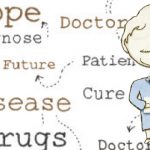 A study examining the association between antibiotic prescriptions and a higher risk of rheumatoid arthritis (RA) found the odds of developing RA were 60% higher in patients who took antibiotics than in those who did not. Such exposure may be the result of microbiota disturbances or underlying infections driving RA risk.1
A study examining the association between antibiotic prescriptions and a higher risk of rheumatoid arthritis (RA) found the odds of developing RA were 60% higher in patients who took antibiotics than in those who did not. Such exposure may be the result of microbiota disturbances or underlying infections driving RA risk.1
Although further research is needed to explore these mechanisms, study co-author Lindsay J. Hall, PhD, a microbiologist at Quadram Institute Bioscience in Norwich, Norfolk, U.K., says these findings support previous research implicating antibiotic-induced disturbances of the human microbiota in developing autoimmune disorders. She notes, the research shows that “commonly prescribed antibiotics may link to the increasing trend of autoimmune or chronic inflammatory disorders, including juvenile idiopathic arthritis (JIA).”2
Dr. Hall says this study is particularly important because it is a significantly large population-based study, using U.K. primary care medical records from more than 100,000 anonymous patients. The study linked antibiotic usage and infection with a higher incidence with RA, including in patients with those prescriptions 10 years prior to RA diagnosis, while considering potential confounders.
The findings also show “other factors that may be linked to RA disease onset, with a major focus on the microbiota, which is central for immune programming,” she says.
A Common Risk for RA
Using patient data from the Clinical Practice Research Datalink (CPRD) database, Dr. Hall and colleagues identified individuals with a recorded diagnosis of RA between 1990 and 2017. In total, 22,677 RA cases were identified and matched with 90,013 controls, with a median follow-up of 10 years before RA diagnosis.
All classes of antibiotic exposure, as well as antifungal and antiviral exposure, were associated with higher odds of developing RA. Bactericidal antibiotics carried a higher risk than bacteriostatic antibiotics. Patients with antibiotic-treated upper respiratory tract infections were more likely to become RA cases.
According to study findings, the magnitude of association with RA increased with the increasing number of unique antibiotic prescriptions. Timing was also a factor related to higher odds of RA in patients who were last exposed to antibiotics one to two years before RA diagnosis, as compared with patients last exposed to antibiotics between five and 10 years before diagnosis.
Implications for Patient Care
Although these data require further analysis before influencing changes in clinical practice, the study findings do “add to the complex jigsaw around what causes RA,” says Christian Mallen, BMBS, PhD, a study co-author and head of the School of Primary, Community and Social Care and professor of general practice at Keele University, Staffordshire, U.K.



